EMG Italy
- EMG Global
EMG Countries
- EMG Belgium
- EMG France
- EMG Germany
- EMG Netherlands
- EMG USA
- EMG United Kingdom
EMG Brands
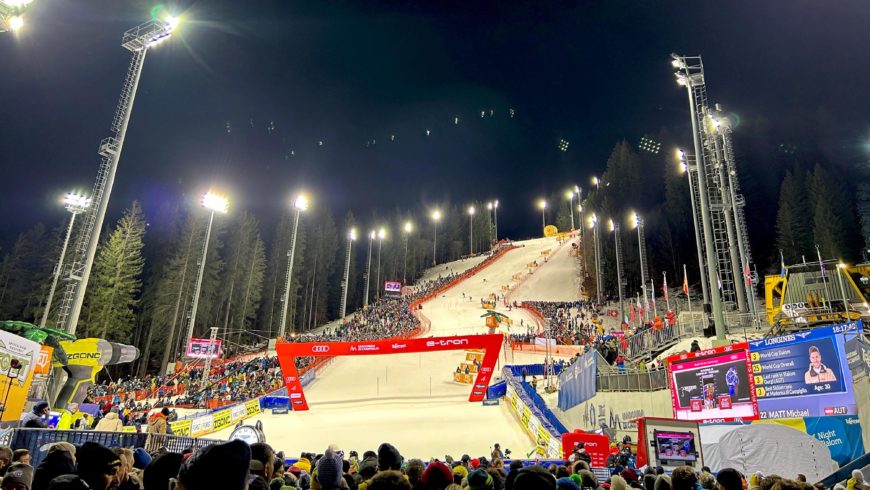
This season of the Ski World Cup, broadcasted by RAI in Italy and worldwide by Eurosport, has been a tour de force for EMG Italy tasked with television production by Infront, the rights holder. Between December, January, and February, 28 productions were realized, with 11 concurrent races in December alone, involving 265 people simultaneously in various locations and employing 11 mobile units.
“This commitment has driven EMG Italy,” says Davide Furlan, Outdoor Production Director, “to modify the Production Department to adequately respond to the numerous and demanding productions that, by corporate choice, must be coordinated and supervised on-site by prepared and trained personnel under every aspect. These include basic technical skills to understand and comply with technical specifications, relational skills with clients, and ultimately, the ability for problem-solving to address needs arising during on-site production days. These choices demonstrate an adaptability and orientation towards innovation and reflect the dynamism and competence of the entire EMG/Gravity Media group. Additionally, the current season has witnessed a significant turning point in how we narrate and experience some of the most fascinating winter sports, including alpine skiing within the World Cup context.”
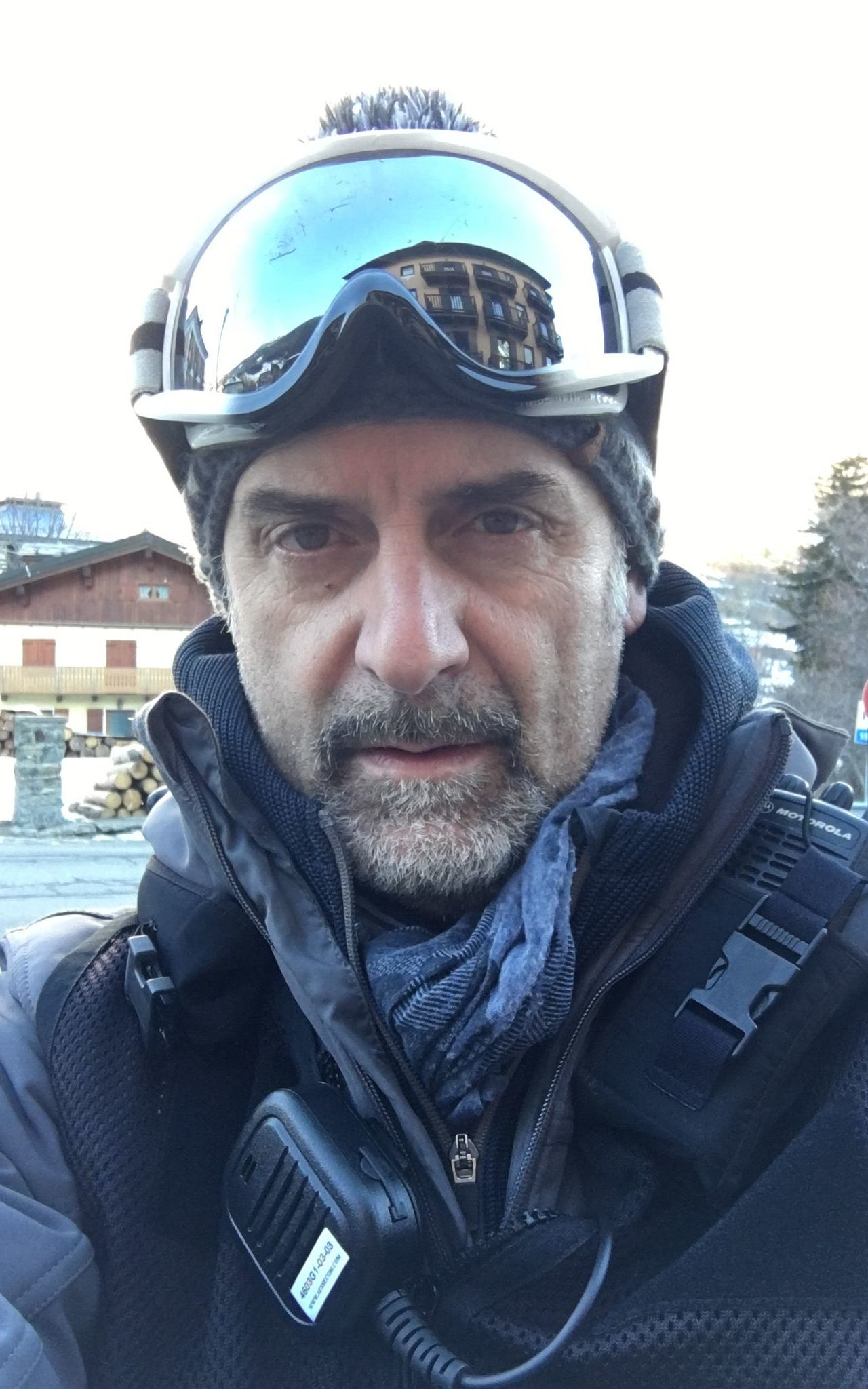
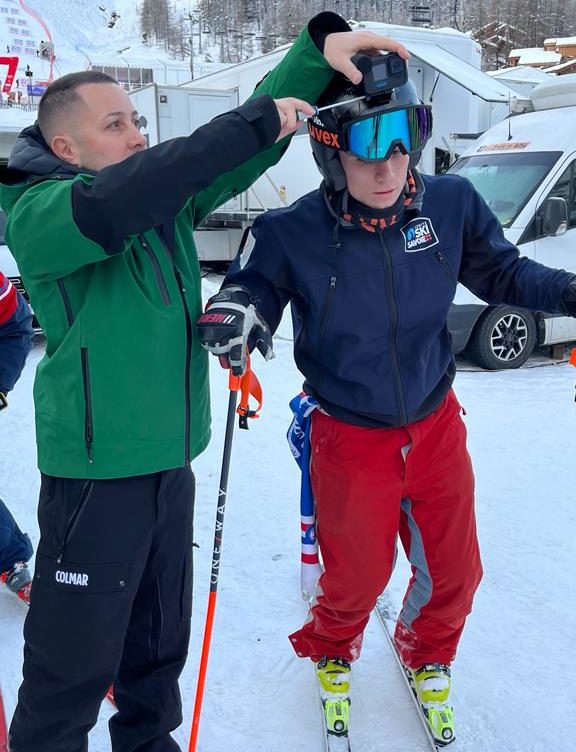
Four locations were involved in this narrative innovation revolution of the Alpine Ski World Cup: Gardena, Cortina, Val di Fassa in Italy, and Val d'Isère in France. At the center of this narrative revolution of the Alpine Ski World Cup is the extensive use of footage captured by drones during the "fast" races. This marks a significant change from their previous limited usage, which was restricted to specific events with "significant" budgets, such as the World Championships or, in the production of the most iconic Downhill race, the one in Kitzbühel.
In this new season, thanks to a significant investment by Infront, which has always sought to enhance the storytelling quality of these events, drones made their debut in some of the most iconic races of Italian and French alpine skiing, also thanks to the spectacular television production technically managed by EMG Italy. The downhill races in Val Gardena and Val-d'Isère, as well as the women's downhill in Cortina, saw the use of this technology, opening new horizons in how we, as spectators, experience skiing competitions, bringing viewers closer to a more immersive perspective with a spectacular view for the dynamics and the proximity to the athletes along exciting sections of the track.
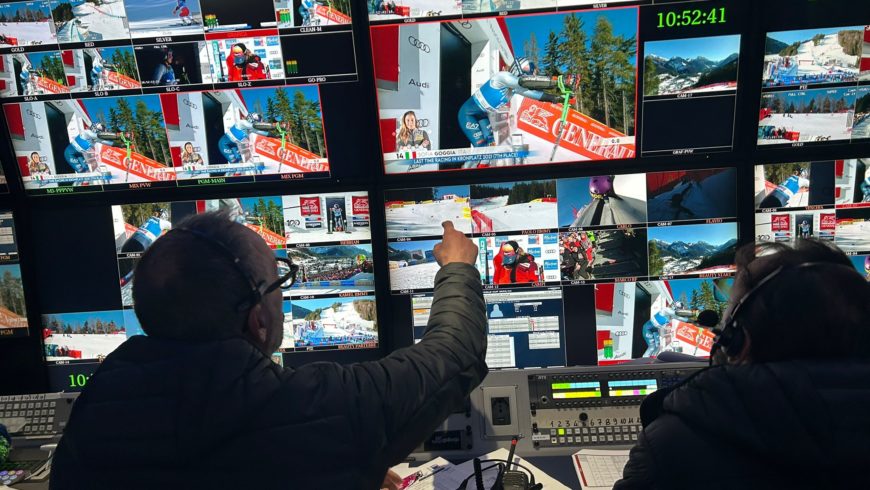
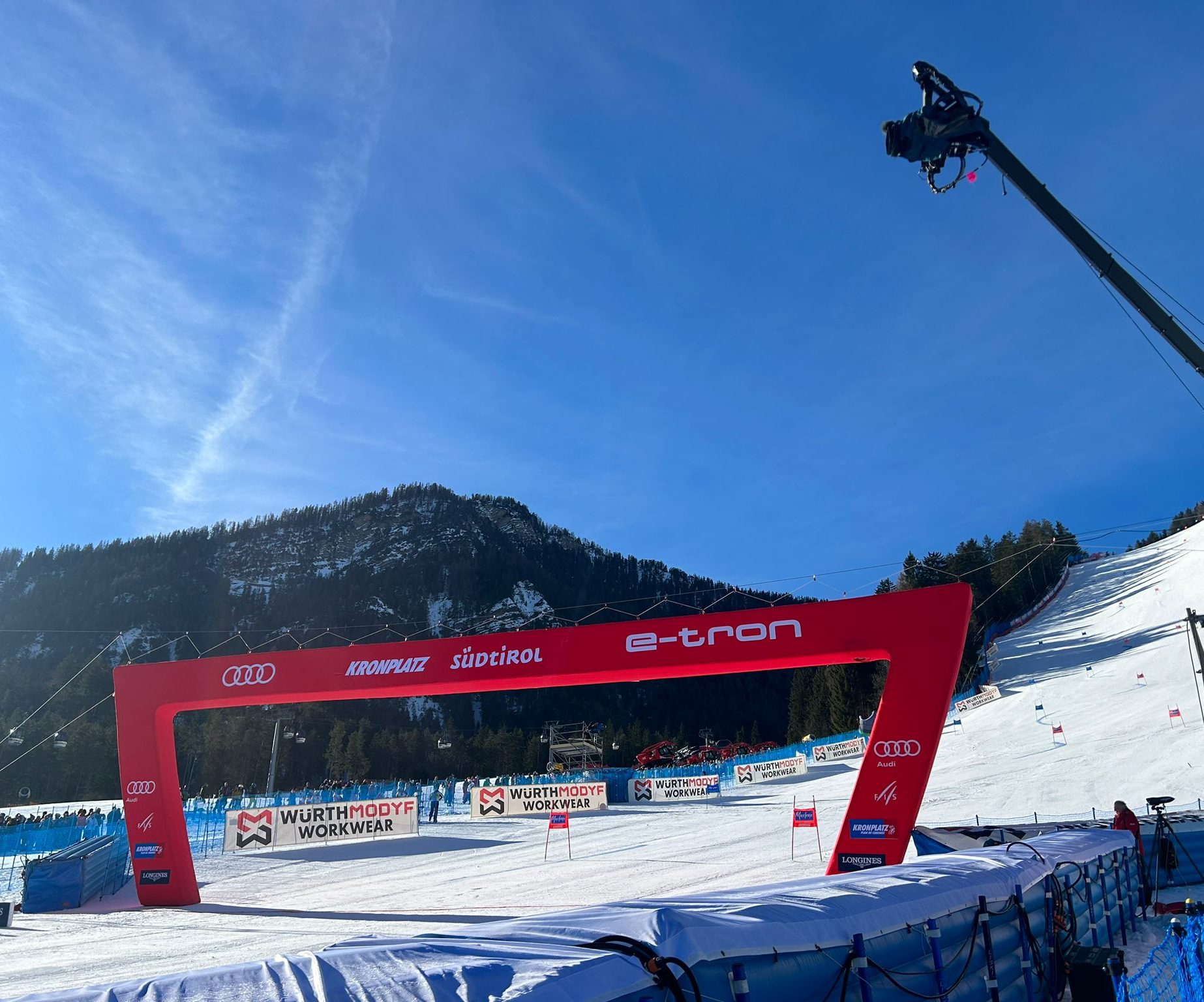
The shots in this style, resembling the perspective of first-person video games, were unthinkable just a few years ago and are now a reality thanks to the evolution in drone technology. The models used offer top-level performance and boast resilient and reliable radio transmission systems onboard. This ensures a quality of footage acceptable to be paired with that obtained with traditional broadcast cameras. Due to the speed at which the drone follows its target, the images, albeit less detailed and informative, are so impactful that the eye and perception of the image are not of lesser quality compared to a broadcast camera mounted on the side of the track, thus the final result does not show aesthetic discontinuities.
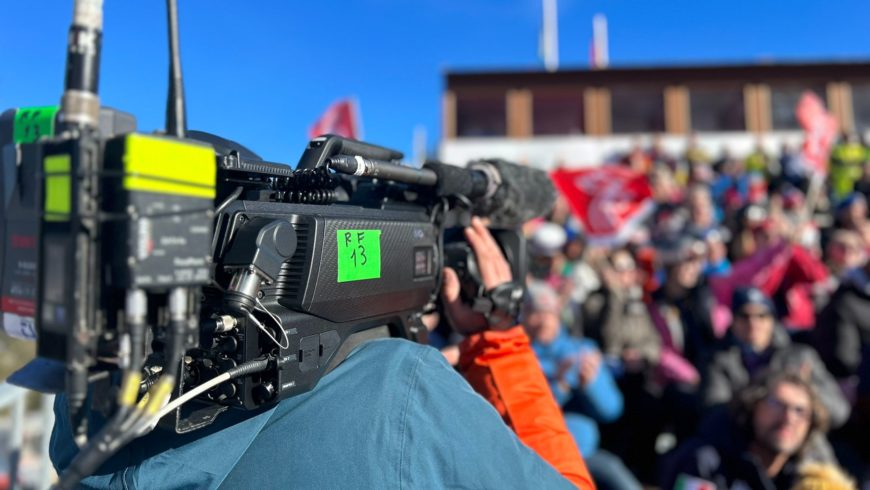
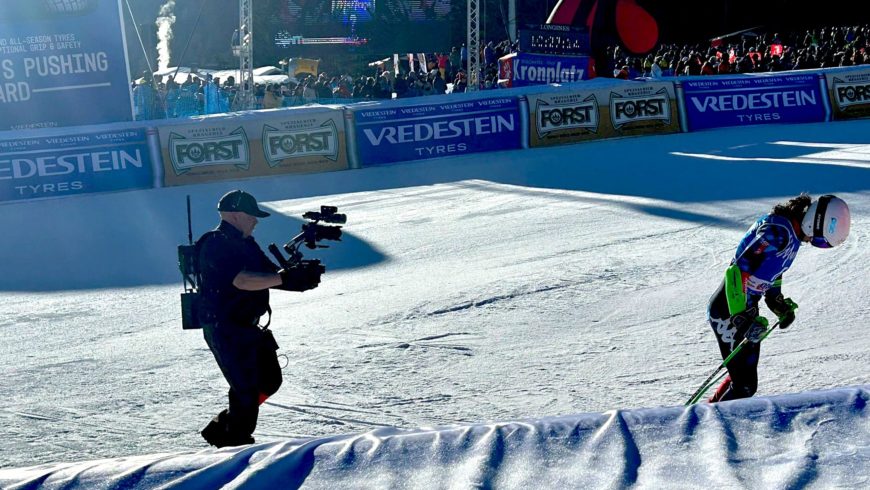
“In more technical disciplines,” specifies Furlan, “such as Giant Slalom and Slalom, where the narrative requires more details to make the athletes' lines evident, the use of drones is currently more limited. In these circumstances, the focus is more on athletic performance, downhill trajectories, and any errors on the gates.”
The first massive use of drones starts from appreciated experiences a few years ago in Kitzbühel; today, we are seeing a more numerous and prolonged involvement compared to the past, thanks surely to the great technical changes of the aircraft that have made them smaller, safer, and more performant. Moreover, it should be noted that federations, but especially producers and directors, are always looking for visual strategies to increase viewer interest, and in this case, having this unique perspective flying a few meters from the athlete is certainly exciting and winning.
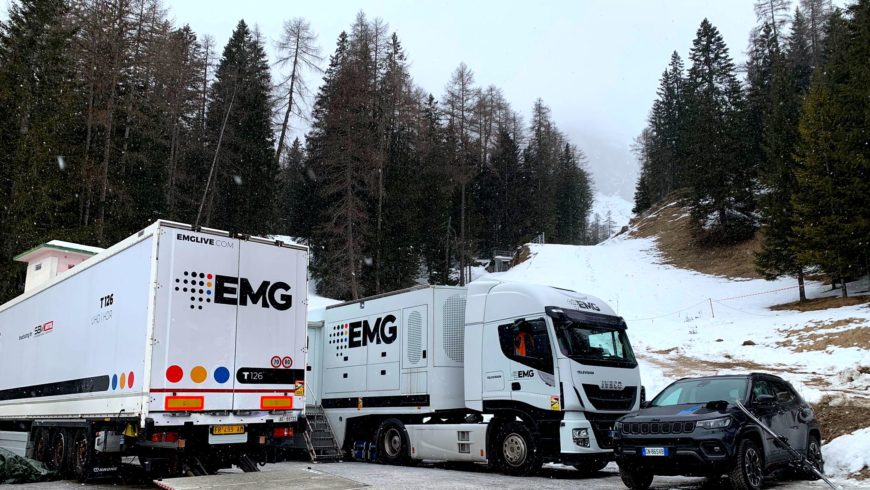
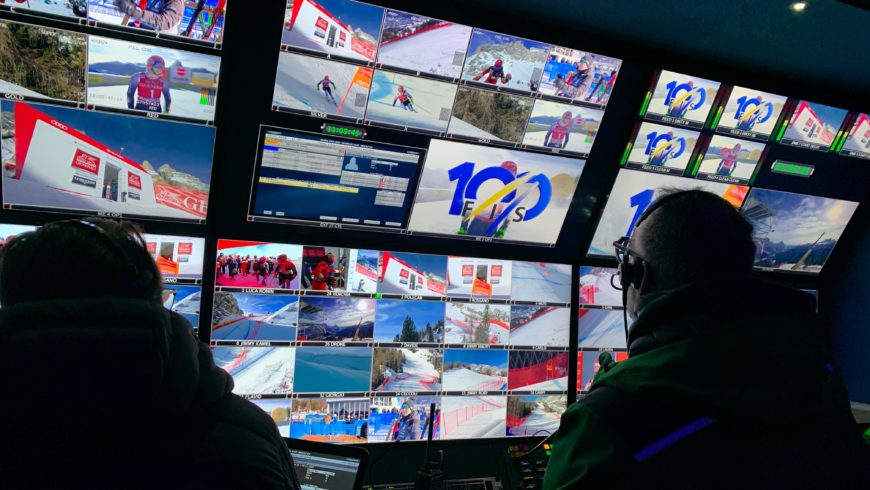
Middle position
EMG Italy directors, also paying attention to safety, before the technical setup of the cameras along the track, select a portion of the track where the audience is adequately distant. From this strategic point, a carefully chosen sector, the drone flies along the track and covers approximately 400-500 meters of descent, flying over the skiers. In Kitzbühel this season, two drones were even used in two different sectors. The models used are all state-of-the-art FPV type, which offers an immersive flight experience. The pilot, through an FPV visor (e.g., Goggles V2), can see what the drone sees, offering a sharp and fluid image at 120 fps. This technology has made huge strides in miniaturizing the drone itself, greatly improving the quality of the sensor and the subsequent data transmission, making the drone practically an extension of the traditional broadcast system. The pilot, strategically positioned on the track in a specific location, uses the visor to have an immersive view, as if he were actually on board the drone. Two operators are involved in these special shots, one manages the flight movement, while the other takes care of the shots and the camera. Through transponders and progressive HD video carriers, telemetry data and images reach the intermediate position mentioned via RF, and from there they are transmitted to the OB truck through fiber optics.
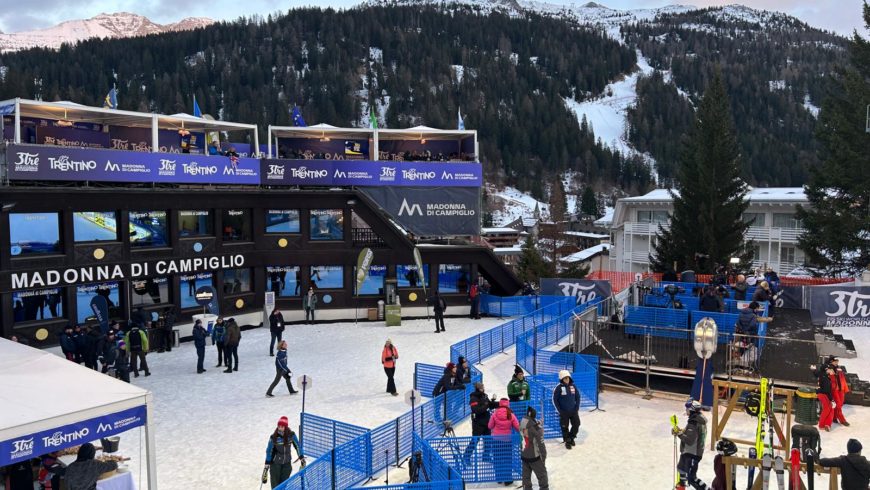
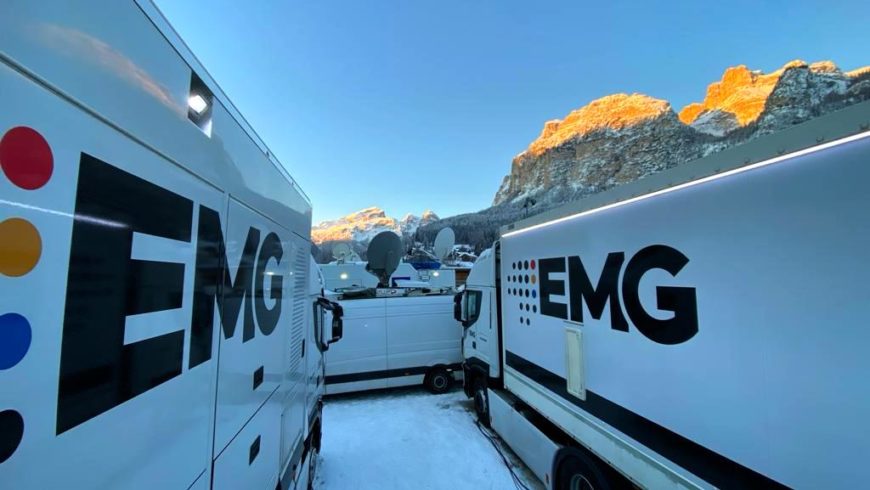
With this innovative impulse, the entire television production calendar was carried out. The OB Truck Nova 126 unit was the protagonist with 28 cameras on the downhill. In Nordic skiing, the races in Dobbiaco and Fiemme imposed an extraordinary technical commitment for the World Cup, using additional resources such as two live snowmobiles, a cable-cam, a drone, and a helicopter, for a total of 32 cameras. The complexity of alpine skiing tracks also required a significant effort for pre-race movements and structure assembly; nothing would have been possible without the experience of the Infront and EMG Italy staff.
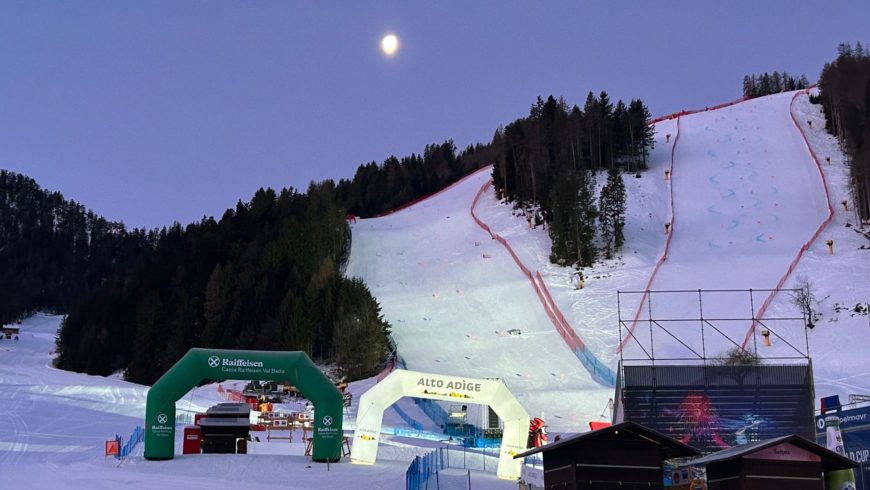
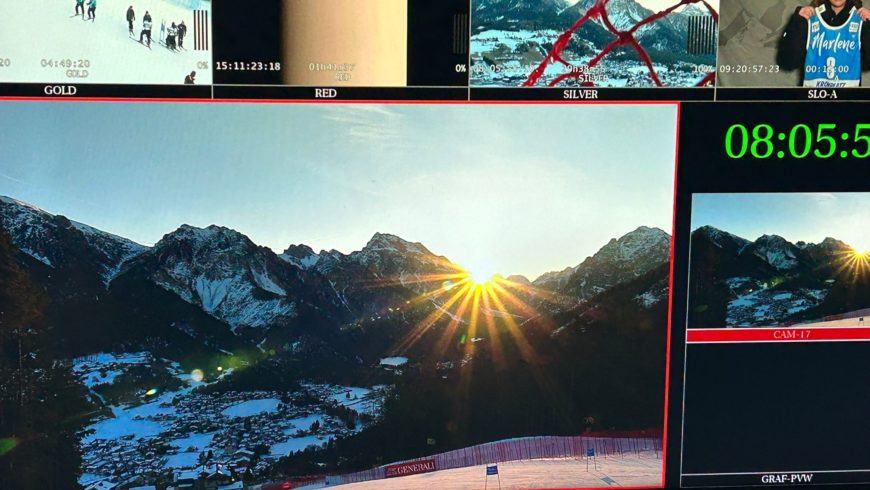
The new operating model
The Production structure of EMG Italy has been substantially transformed, as part of the transformation process of the structure undertaken last year. New people have been hired, and the search for these professions continues, mainly looking for young people eager to learn a trade that will make them protagonists and central in the dynamics of television production.
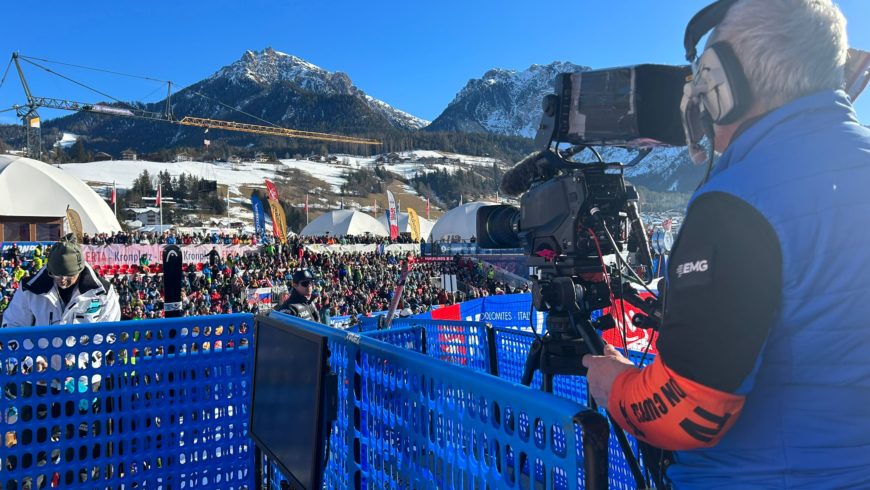
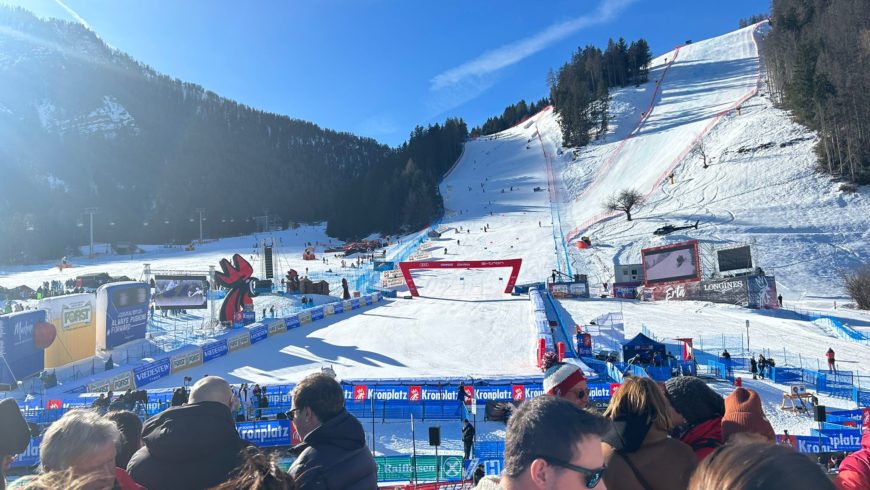
Davide Furlan concludes: “We have aligned ourselves with the European model of the EMG/Gravity Media Group: the producers have significantly increased in number because the presence of an EMG Italy producer has become indispensable for each race. By precise corporate will, constant and punctual control over each individual production has been organized, at every step of the various projects, it has been required that there be supervision of the voices that make up the work, also on-site, of course, so the Production figures have become the first link in the chain, or at least the one to which the others refer to have details and, obviously, results. These new production figures, evolved and specialized for sports, ensure that the very soul of the event and the contract are respected on top-level events based on customer requests and, of course, the allocated budget. Only in this way can we guarantee the best on every aspect of the project, both technically and organizationally and productively. This responds to a more international organizational profile that mirrors the group's model and that from this year we have also begun to adopt in skiing, which has many specificities related to the variables of a sport that takes place in extreme conditions in a period concentrated in three months of the year.”
###
© Presspool PressOffice RobertoLandini
Do you have questions or need information? Fill in your contact details and we'll contact you as soon as possible!
"*" indicates required fields